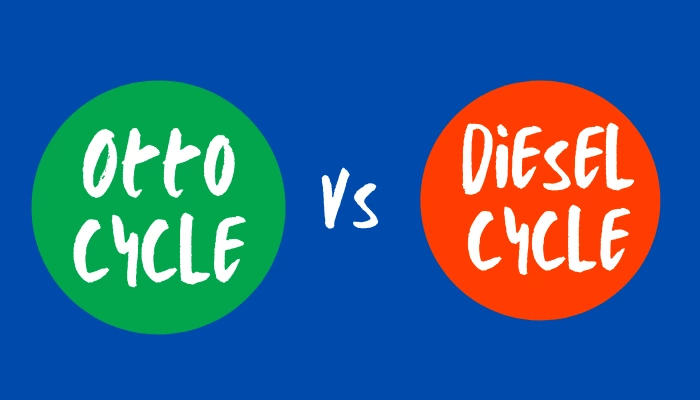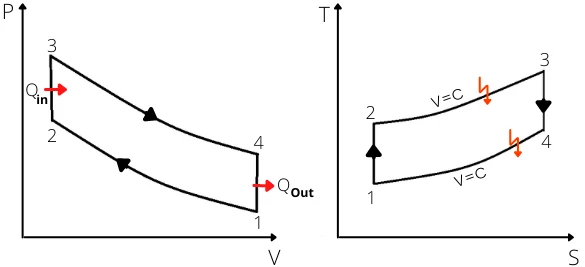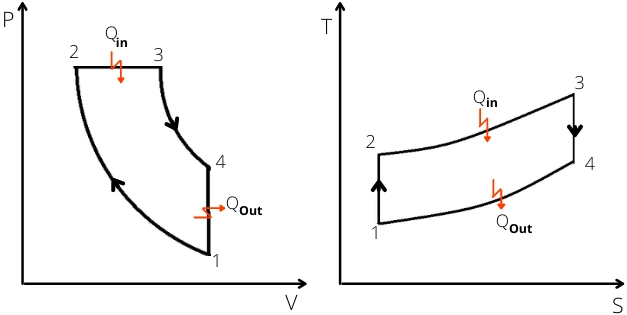The key differentiating part for the Otto cycle and the diesel cycle is that the Otto cycle is the working cycle for the SI or Petrol engine while the diesel cycle is the working cycle for CI or diesel engine.

Before discussing the difference between these power cycles, we are going to discuss in brief about the Otto and diesel cycle.
Otto cycle:
The Otto cycle is an ideal thermodynamic air standard cycle developed by Nicolaus Otto in 1876. The cycle consists of two constant volume processes and two isentropic processes.
Following are the PV and TS diagrams for the Otto cycle,

The Otto cycle consists of the following processes,
Process 1-2:- Isentropic compression
Process 2-3:- Constant volume heat addition
Process 3-4:- Isentropic expansion
Process 4-1:- Constant volume heat rejection
The working of the SI engine is based on the principle of the otto cycle.
Diesel cycle:
Diesel cycle is an ideal thermodynamic air standard cycle developed by the German inventor Rudolf Diesel in 1897. This cycle consists of two isentropic processes, one constant volume process, and one constant pressure process.
Following are the PV and TS diagrams for the diesel cycle,

The diesel cycle consists of the following processes:-
Process 1-2:- Isentropic compression
Process 2-3:- Constant pressure heat addition
Process 3-4:- Isentropic expansion
Process 4-1:- Constant volume heat rejection
The working of the CI engine is based on the principle of the diesel cycle.
Difference between Otto cycle and Diesel cycle:
| Sr. No. | Otto cycle | Diesel cycle |
|---|---|---|
| 1 | The Otto cycle is the working cycle for the petrol or SI engine. | For the same compression ratio, the thermal efficiency of the Otto cycle is higher than the diesel cycle. |
| 2 | The cycle operates at a comparatively lower compression ratio. | The cycle operates at a comparatively higher compression ratio. |
| 3 | The cycle consists of two isentropic and two constant volume processes. | The cycle consists of two isentropic, one constant pressure, and one constant volume process. |
| 4 | In this cycle, the heat addition and heat rejection take place at a constant volume. | In this cycle, the heat addition takes place at constant pressure and heat is rejected at constant volume. |
| 5 | The thermal efficiency depends on the compression ratio. | The petrol engine working on Otto cycle is light in weight due to the lower compression ratio. |
| 6 | For the same compression ratio, the thermal efficiency of the diesel cycle is lower than the Otto cycle. | The thermal efficiency depends on the compression ratio and cut-off ratio. |
| 7 | For the same maximum pressure and temperature, the thermal efficiency of Otto cycle is lower than the diesel cycle. | For the same value of maximum pressure and temperature, the thermal efficiency of the diesel cycle is higher than the otto cycle. |
| 8 | For the same maximum pressure and temperature, the thermal efficiency of the Otto cycle is lower than the diesel cycle. | The diesel engine working on the diesel cycle is heavier due to the higher compression ratio. |
Read also: